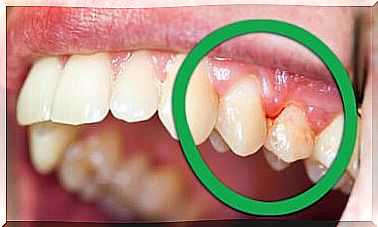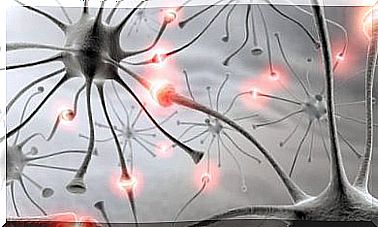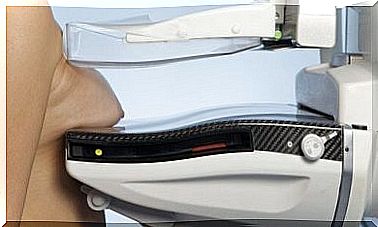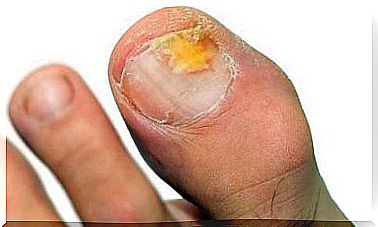Temporomandibular Tension Syndrome

Temporomandibular tension syndrome is characterized by pain and an alteration in joint function.
It is also called temporomandibular joint dysfunction and corresponds to a group of joint conditions in this region. It can have a significant impact on the patient’s quality of life. What it is? How to treat it? Find out everything you need to know below.
What is the temporomandibular joint?
It is the joint that connects the jaw to the skull in the temporal region. It is located on both sides of the head, just in front of the ears. Its function is to allow the opening and closing of the mouth. This is possible thanks to so-called chewing muscles.
This joint is used when we are talking, eating, yawning or laughing, so it’s easy to see that we use it constantly. For this reason, it is not difficult to observe joint dysfunctions in adults. This problem occurs even in children, especially from 10 years of age onwards.

What is temporomandibular tension syndrome?
As we mentioned before, it is a group of affections and is usually classified, according to the origin of the problem, as muscular or articular. In fact, often both the joint and the masticatory muscles are affected.
It can be unilateral or bilateral. It is more common in women. In addition, the most frequent age of presentation is between 20 and 44 years (approximately), although it can occur at any age.
It is characterized by the presence of:
- Acute or chronic pain related to jaw movement, usually in the area around the ears.
- Joint snapping during opening and closing of the mouth.
- Limitation in opening the mouth, and the jaw may lock up.
- Head and neck pain.
- Earache.
- Buzzing.
- Decreased hearing acuity.
What are the possible causes?
The possible causes are very varied. In fact, on many occasions more than one may be present. Here are some of the most common ones:
- Dental malocclusion.
- Habit of clenching the jaw.
- Bruxism.
- Habit of biting the pencil.
- Chew gum.
- Stress and anxiety.
- Increased sensitivity to pain.
- Rheumatoid arthritis.
- joint infection
- Joint dislocation.
- Neoplasms.
- Degenerative joint diseases.
- Trauma in the joint region.
- Displacement of the articular disc.
Generally, to make the diagnosis, the specialist simply takes a history of the pain and performs a physical examination of the region, including the neck.
Sometimes an imaging study is required, such as an X-ray, CT scan, or MRI. If the doctor deems it necessary, he will perform blood tests to obtain a differential diagnosis.
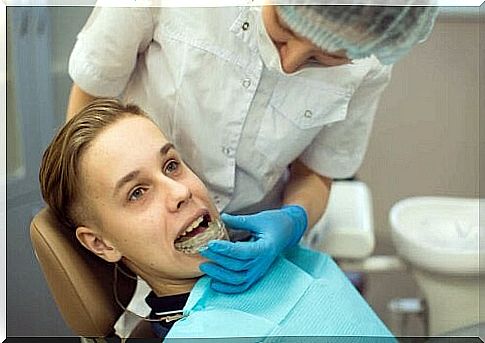
How to improve temporomandibular tension syndrome?
On many occasions, the causes of this syndrome coexist and the solution to the problem may require the participation of an interdisciplinary team. Sometimes it can be a temporary situation, which can even get better without any specific treatment.
However, at other times, treatment measures that can improve pain and poor joint function will be needed. There are actions that can be taken by patients to reduce or control this syndrome. Let’s call them conservative measures:
- Avoid biting any inedible elements (pencils, pens, nails, etc.).
- Keep the jaw slightly open, relaxed, to prevent it from becoming constantly tight and tense.
- Be very careful or even avoid certain musical instruments that can strain your mouth, jaw or neck.
- Apply muscle relaxation techniques.
- Apply hot or cold compresses to the painful area.
- Improve sleep hygiene.
- Do muscle massage.
- Eat soft foods.
- Avoid wide jaw movements.
These measures will be very useful, always under the supervision of the specialist. Sometimes, in addition to these indications, the doctor also prescribes painkillers and physical therapy.
There are removable occlusal splints that can be useful in some cases. On the other hand, in patients where the joint is severely compromised and conservative measures are not enough, surgery will be necessary.
The prognosis may vary depending on the cause.
Fortunately, in most cases, this type of pathology responds well to conservative measures. So there is a good prognosis. However, it should be made clear that the temporomandibular tension syndrome can originate from a neoplasm, degenerative joint diseases, etc. Therefore, the prognosis and course of the disease may vary.
Given the above, symptoms can improve or worsen depending on the evolution of the problem that gave rise to the disease. For this reason, it is essential to make a good medical diagnosis and start treatment according to the professional’s indications.
